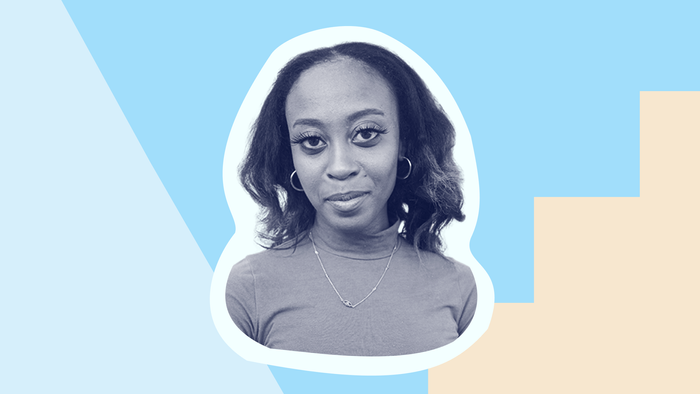Fun fact: There’s a whole industry of professional Bubble Developers out there building top-notch apps for clients.
One of them is Harmony Jackson, a Bubble tinkerer, turned freelancer, turned in-house product designer. We sat down with her to learn more about her journey and the doors that no-code unlocked along the way.
Tell us your Bubble story.
I discovered no-code when I was looking to create a platform for knitters and crocheters as a fun side project. (That’s since expanded into a community of 50K+ and a business called HMF Pattern.) Shortly after, I applied for and was accepted to Bubble’s Immerse pre-accelerator program. As I was learning Bubble, I realized just how flexible the interface was, not only for development, but also for design. It was just going to take a little time and patience.
From there, I branched out into freelancing, and as I built for clients, I continued to develop my Bubble skills. Plus, getting the opportunity to work closely with founders to bring their visions to life was what led me to product design. I worked with them closely enough to learn about their unique business goals, which helped me make extremely informed design decisions. Learning about the design-to-development lifecycle in a short period of time was a great way to gain the experience I needed to thrive in a full-time role.
What does your career look like today?
Today, I’m a product designer at a leading healthcare-focused procurement company called The Group Savings Organization. I’m leading design efforts for a full UI/UX retrofit of existing products, plus end-to-end design for new products serving needs like contract management and asset management.
Bubble lets me replicate my designs exactly how I've designed them in Figma while building out a component library that we can use to streamline development. It’s extremely rewarding to experience just how quickly I’m able to see a finished product compared to the traditional design and development cycle.
How has becoming a Bubble Developer unlocked doors for your career?
It’s allowed me to strengthen my design skills at a faster rate because I have a super-strong knowledge of how development works in Bubble. As I'm designing, I'm hyper-aware of what the restrictions are, so I can come up with viable design solutions that look great and are also feasible for development. I also really value the time I spent freelancing in the past, helping early-stage founders bring their business ideas to life.
How many Bubble apps have you built to date? Which one was the coolest?
In total, I've probably built around five Bubble apps, but I still think the coolest one was HMF Pattern. When they first logged in, users were welcomed by a personalized dashboard of their “maker profile,” which they completed during onboarding. From there, they could add the HMF patterns they wanted to work on to a dashboard, which also let them see their progress and pick up where they left off. Each pattern had step-by-step instructions with imagery to guide the user through their pieces. They could also add photos of their finished work to a photo gallery. Beta testers of the platform loved the personalization and having a dedicated space to manage projects, and I was thrilled to be able to create a community like that on my own.
The needs of the community have changed in the years since then, but at the time, it was an excellent way for me to vet interest in the concept and see an idea come to life in as little as four months.
What would you say to someone who's considering a career in no-code?
A great way to start learning Bubble is by building out one aspect or functionality at a time. For instance, instead of trying to build out a whole social media app, just master messaging. Starting out super, super small and running a lot of tests is the best way to do it. I also highly encourage other designers to use no-code to strengthen their design portfolios and understanding of how development works.
What excites you most about no-code and the future?
I love how supportive the no-code community is and how accessible it's making tech for people of all ages and backgrounds. The Bubble forum is my go-to for any questions because there’s a high chance someone else has encountered the same problem, and they’re always more than happy to help others resolve it.
I think getting involved with this community is an excellent way to learn and grow in the tech space, and I can tell that no-code is definitely here to stay.
Build for as long as you want on the Free plan. Only upgrade when you're ready to launch.
Join Bubble






